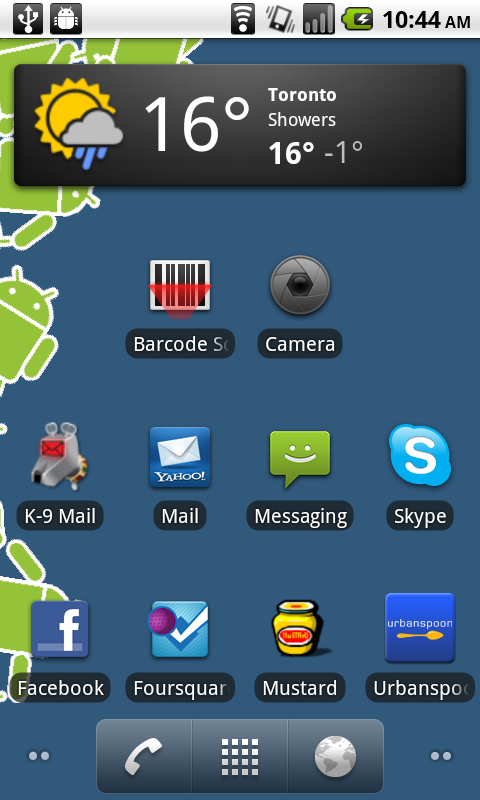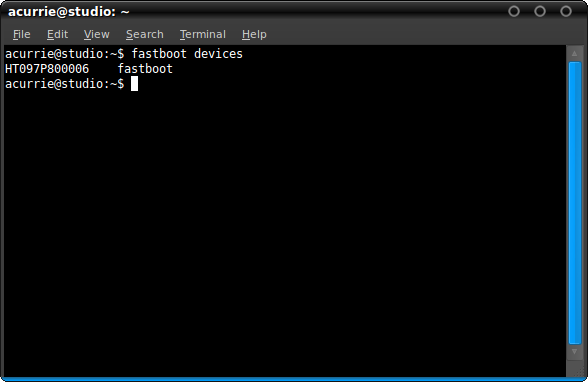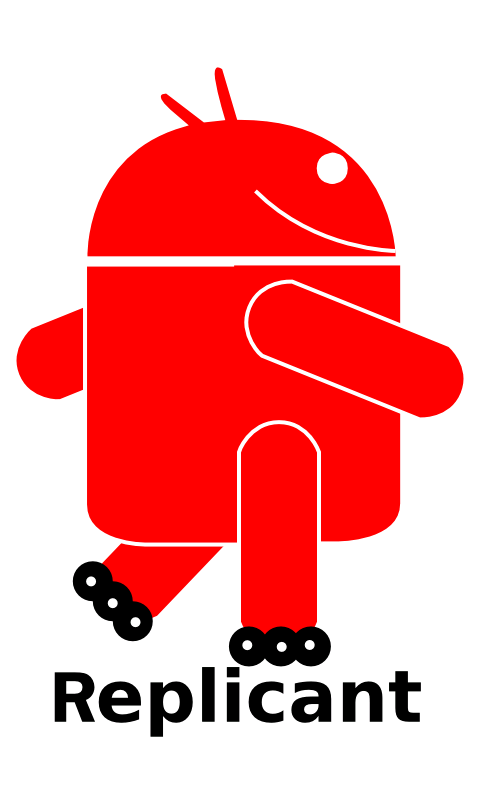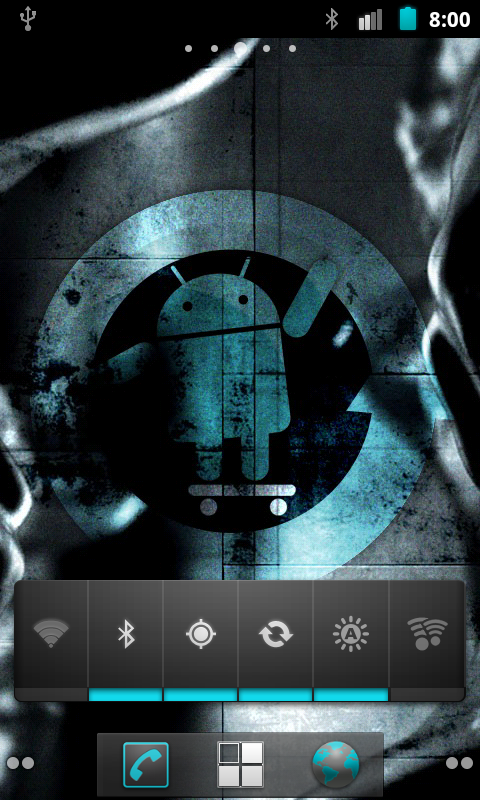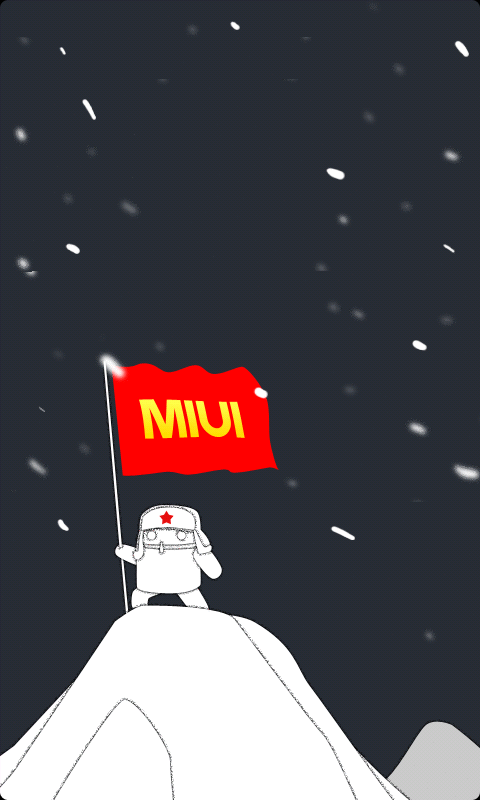I hated my first mobile with a passion because I saw no value in having one. Once I got hooked on the non-voice features, however — text messaging first, data later — it was a different story. At the dawn of the new millennium I had no idea of how powerful the lowly cell phone would one day become; my personal device wish-list had but two items:
- An address book that could be synchronized between phone and computer;
- A phone that could travel with me anywhere in the world.
My first wish was granted in the year 2000 courtesy of a plug-in module for a PDA . The next year I trialled my first “world” phone in Hong Kong, and bought another while I was there. But it wasn’t until 2007 and my first 3G handset that I was able to access Japan’s advanced mobile networks with my own device.
Then there was the third thing, a feature I didn’t even know I wanted until I saw it coming. By the summer of 2009 I could foresee a smartphone future that paralleled the present state of desktop computers and Linux — that the hardware would one day become a commodity, freeing its owner to use the operating system of his or her choice. Not two years later I had CyanogenMod on my first Android phone, and an entire universe of other custom ROMs just a download and install away.
The story of mobile phones doesn’t end here, of course. The hardware continues to evolve, not so much by leaps and bounds anymore as the touch-screen “fondleslab” has become the de facto standard. Internal components are faithfully following Moore’s law, getting ever smaller, better and cheaper. There has been a much more disruptive change in the manufacturers who bring the devices to market; the once-mighty Nokia and RIM have had their market share almost entirely usurped — first by Apple and now, it seems, by Samsung.
On the software side Android is widely acknowledged as the world’s dominant mobile phone OS; that the code is freely available to all ensures a healthy and diverse ecosystem of the aforementioned custom ROMs. But there are new players on the horizon: Firefox is set to release its own mobile OS in the very near future, and some ex-engineers from Nokia have vowed to continue the legacy of the Linux-based Maemo and MeeGo with a new startup called Jolla.
At some point down the road history might allow for a second edition of this book. For now, I can only marvel at the progress I’ve seen. Perhaps the most cherished sign of how far we’ve come is that people in public spaces are generally spending less time shouting into their mobiles and more time quietly interacting with them.
I’ll leave you with a final memory: At South by Southwest in 2011 I attended a movie première at Austin’s historic twelve hundred-seat Paramount Theatre, so packed that I could only get a seat in the last row of the balcony. The film was entirely forgettable, but I’ll always remember what I saw as the end credits began to roll. The huge auditorium in front of me was suddenly lit with the sparkle of a thousand tiny screens, silently reaching out to each other and the world beyond.
For this unabashed mobile phone geek it was a little bit like heaven.
]]>You’ll recall that the word “Nexus” means three things when it comes to phones:
- “Pure Android” — an operating system free of carrier bloat;
- Factory unlocked — usable on any network (frequencies notwithstanding);
- Unlockable bootloader — and the widest available selection of custom kernels, ROMs, etc.
It’s this recipe for success that has kept me faithful to the Nexus line for three devices and counting — four if you include the Nexus 7 tablet charging in the other room as I write this. To be honest I’m not so much a fan of plasticky Samsung phones; that I’ve bought two of them says something about my unfaltering loyalty to Nexus.
The first time I saw the Nexus S was in the hands of a Mr. Dave Dobbin. At that time he was the CEO of Mobilicity, and in January of 2011 he had the T-Mobile version with him at a promotional event I attended. Yours truly go to hold it for a precious few seconds. Though otherwise an unremarkable slab, the screen on this Samsung was a wonder to behold. The colours were incredibly vivid and rich; the blacks so deep as to be an abyss. And the glass was impossibly curved, fitting perfectly against your cheek when on the phone.
I came very close to purchasing one at a Best Buy during South by Southwest later that spring, and when Mobilicity started selling it in April I could no longer resist.
The first beneficiary of this purchase was actually my Nexus One. Relieved of its day-to-day duties I was able to figure out this whole rooting and ROM-ing business with drastically reduced consequences. It wouldn’t be until December, 2011 that I’d load the legendary CyanogenMod ROM onto my Nexus S; when I did I was pleasantly surprised by the inclusion of a fully-functioning Google Wallet app. I used it with the S’s on-board NFC chip to make my first contactless mobile phone payment, a fancy tea at a posh supermarket café. I’d like to believe it was the first such event in Canada; it probably wasn’t but that’s my story and I’m sticking to it.
At the end of that month my girlfriend and I visited Hong Kong (my 6th trip there!) to ring in 2013. While Samsung’s wide-bodied Galaxy Note was all the rage there, I was on the hunt for the “it” phone of the moment back in the Americas, the Galaxy Nexus. I felt confident buying it overseas because this third Nexus had a pentaband radio, meaning that I could enjoy 3G data speeds on any carrier anywhere in the world. It was also free of any carrier locks. Unfortunately it cost more in Hong Kong than on the Bell network back in Canada.
The Galaxy Nexus eventually got a wider release here, and I got mine on a subsidy from WIND Mobile in the spring. WIND is another upstart Canadian carrier, offering unlimited calls, texts and data at prices much lower than the incumbents. I had switched to them from Mobilicity before Christmas, when they ran a holiday promotion. WIND has proven to be much better in terms of coverage for me — for the first time since I was with Fido I could actually make phone calls from inside my home… What an age we live in!
This third Nexus was both new and familiar at the same time. There was the curved glass, plus a new version of Android — another hallmark of the Nexus line. I wasn’t really sold on the HD screen and dual-core processor at first; both seemed unnecessary, frivolous even. But over the ensuing months I came to appreciate my Galaxy Nexus as a mobile gaming powerhouse — maybe not the most noble use of bleeding edge technology, but a lot of fun nonetheless.
My trio of Nexus phones accompanied my girlfriend and I to Barcelona in the spring of 2012 — the Nexus One in her back pocket, the Nexus S in mine and the Galaxy Nexus tucked away in the hotel safe. We received lots of advance warnings about pickpockets and such but I needn’t have worried — the Nexus S was (and is) a perfectly usable phone, anyway. I finally convinced my girlfriend to accept it as her next hand-me-down this past September. I took back my Nexus One, which I’m currently using to explore free/libre software from the F-Droid repository. The Galaxy Nexus is to this day my side arm of choice, and will likely remain so until the next Nexus is announced.
]]>My biggest beef was text entry — email and SMS, it seemed, still had their place in this brave new world of mobile computing. The best input solution I could find for my Nexus was an app called Swype, developed by the same brilliant mind behind T9 for number pad phones. And Swype was every bit as clever; the user entered words by flicking their thumb across an on-screen virtual qwerty keypad. The longer the word the more accurate Swype was. More common words were a different story, though; “is” and “if” were often confused, along with “on” and “of”, and just about everything else with less than five letters in it.
It was a frustrating compromise for someone used to physical qwerty — at this point I was even missing the number pad on my N86! So when my new carrier, Mobilicity, released the cheap and cheerful Motorola Spice I got one almost immediately. In fact, at one point I had two.
Here, for less than $200 CAD, was a handset that seemed to have it all: Android, a physical qwerty keypad, even the same vertical sliding design as my N86. An unexpected bonus was the trackpad on the back of the phone — very handy for scrolling through web pages without your thumb getting in the way. The only problem, aside from the dreary lo-res fixed-focus camera, was that the MotoSpice was slow. It was to be expected, I guess, that a smartphone selling for less than half the price of the Nexus One would have a processor just over half as fast.
In practice it wasn’t so bad. I discovered that Android scaled quite well to low-powered devices. One key thing was to be patient while processes (apps) were launched. With less available speed and memory the Spice had to figure out how to allocate its meagre resources when something new was added to the mix. That was the slow part, at least for me; once an app was up and running I found the speed to be quite acceptable.
Also key was liberating the Spice from Motorola’s bloatware, and this could only be accomplished through rooting. The Spice was actually the first Android device I ever rooted — sorry to have misled you but yes, I rooted my MotoSpice long before going near the bootloader on my Nexus One. But where the Nexus got a proper unlock, root and custom recovery the hard way my Spice was rooted using a simple tool that did the hard work for me. Once root was obtained it was a simple matter of removing the Android package “Spicy.apk” and I was good to go. I also installed an app that enabled WiFi tethering; that was another feature that the MotoSpice was missing out of the box.
In retrospect I think the Spice was ultimately a transition device between my tactile N86 and my (almost) all-touch Nexus One, even though I got the Nexus first. I used the MotoSpice as my primary phone for a good six months — from December, 2010 to May, 2011. It came with me on a WOM World-sponsored visit to the famous South By Southwest conference and did quite well there; the Spice was never sold in the USA so the other bloggers on that trip had never seen one. It didn’t fare so well on its second conference run, though. At Podcasters Across Borders in May it became quite apparent that my Spice couldn’t keep pace with the iPhones that surrounded it — plus I dropped it in the elevator of my hotel, leaving a noticeable ding that was pretty much a kiss of death.
But the memory of my MotoSpice lives on. I gave mine away to a friend in need, but was fortunate enough to score a dummy model from my local unlocker. Had the Spice as much processing power as higher-end phones I’d probably still be using it today.
]]>
Ah, the MotoSpice… you folks in the US can start being jealous now.
For less than $200 CAD I had it all: Android, vertical slider, physical qwerty keypad… Okay, the camera was crap and the phone was severely underpowered — and it actually ran Android 2.1, which meant no WiFi tethering. Yet despite these obvious flaws the Spice was the only phone I took out the door with me for almost six months.
The Spice was also the first Android device that I successfully rooted, necessary to enable WiFi tethering and get rid of Motorola’s er, “enhancements”.
This cheap and cheerful handset accompanied me to SXSW in March, 2011 and to PAB later that spring. A testament to its durability was that it survived both trips and being dunked into a cup of piping hot coffee — I just needed a bag of uncooked rice to dry it up.
You can read MobileSyrup’s review of the Spice here, and my own posts about it here.
]]>The complaints I read about Symbian were not lost on me. For the first time I was experiencing a mobile web browser that was actually usable. Not only did full web pages load in a matter of seconds, but double-tapping the screen would “zoom in” to fit the width of a single column of text. And the manual synchronization of personal info — calendars, contacts, tasks — was no longer necessary; an Android phone would do it in the background for you. In fact, setting up an Android phone (or several, as I’d later find out) required no more than a network connection and a Gmail account. As I held this slim block of mostly screen in my hands, I could only marvel at what I’d been missing.
For this particular smartphone veteran Android did have a shortcoming or two, along with a possible area of concern. Coming from my N86 photos and video on the Nexus were clearly not as good, although that was almost entirely offset by something no Nokia camera app would ever remember — that I hated flash photography and wanted my phone’s camera to fire up with the flash powered off. On the subject of power, battery life was fairly abysmal for someone used to going up to three days on a single charge. I’d thank my lucky stars if my Nexus lasted until sundown, especially if I was travelling. And then there was Google — or more specifically the requirement that I hand over pretty much all of my personal information to them. I’m still not a hundred percent comfortable with that.
You could argue, of course, that what you got in return for the data mining was a bargain — and for a lot of Android users I suspect that’s true. But what finally sold me on this new OS was learning how I could take Google out of the equation entirely yet still use Android, through the magic of custom ROMs. The hard part was getting started. The Nexus One was sold with an unlockable bootloader, like the BIOS on a Windows-based PC. By unlocking it you could flash a custom recovery image, and in turn use that to flash a custom ROM. But unlocking the bootloader required no less than a desktop computer, the Android software development kit, the Android Debug Bridge (adb), and something called fastboot.
If all this sounds confusing believe me, it was. But patience and the seemingly endless cross-referencing of forum threads finally paid off, and a universe of custom ROMs was now just a wipe and install away. My Android handset, powered by the Linux kernel, was as customizable as my Linux desktop computers. From this point onwards, nothing less would do.
King of the Android ROMs was CyanogenMod, which was famously ordered to unbundle the “Google Experience” — that is, the proprietary Google apps. FDroid, an alternative app market featuring only open source software, proved to be a worthy substitute for the official Android Market. Much of what is available there is excellent, but my freedom-hating reliance on the proprietary stuff — Flickr, Foursquare, games — had me using Google’s Market again before too long. Remember too that my new carrier, affordable as it was, provided almost no signal in my home. As such, Google’s chat service was a lifeline between me and a new lady in my life.
When I moved on to my second Nexus device my girlfriend got my Nexus One as a hand-me-down, which she uses to this very day. Her custom ROM of choice is MIUI, made available to the public by Chinese handset-maker Xiaomi. A big draw for MIUI is its themes — you can easily customize not only the wallpaper on your device but also the app icons, on-screen fonts, even the boot-up screen. But there’s more to it than that — MIUI has its own built-in backup and restore system, plus an excellent security feature giving you control over the sometimes suspicious permissions that apps can request.
If nothing thus far has sold you on the Nexus line of superphones, consider this final point: Google quietly revolutionized the mobile phone industry where Apple deliberately chose not to. The first three Nexus devices were sold through carriers just like the iPhone; but very much unlike the iPhone they were sold unlocked. My Nexus One has been to Malaysia, Hong Kong and Spain, and in each of those places expensive roaming charges were replaced with affordable service via a local SIM card. As you can imagine this is not a feature that carriers go to great lengths to explain, nor is it something that many customers appreciate or even understand. But it’s there, and like my Nokias of old it made my $500 CAD Nexus One a bargain.
]]>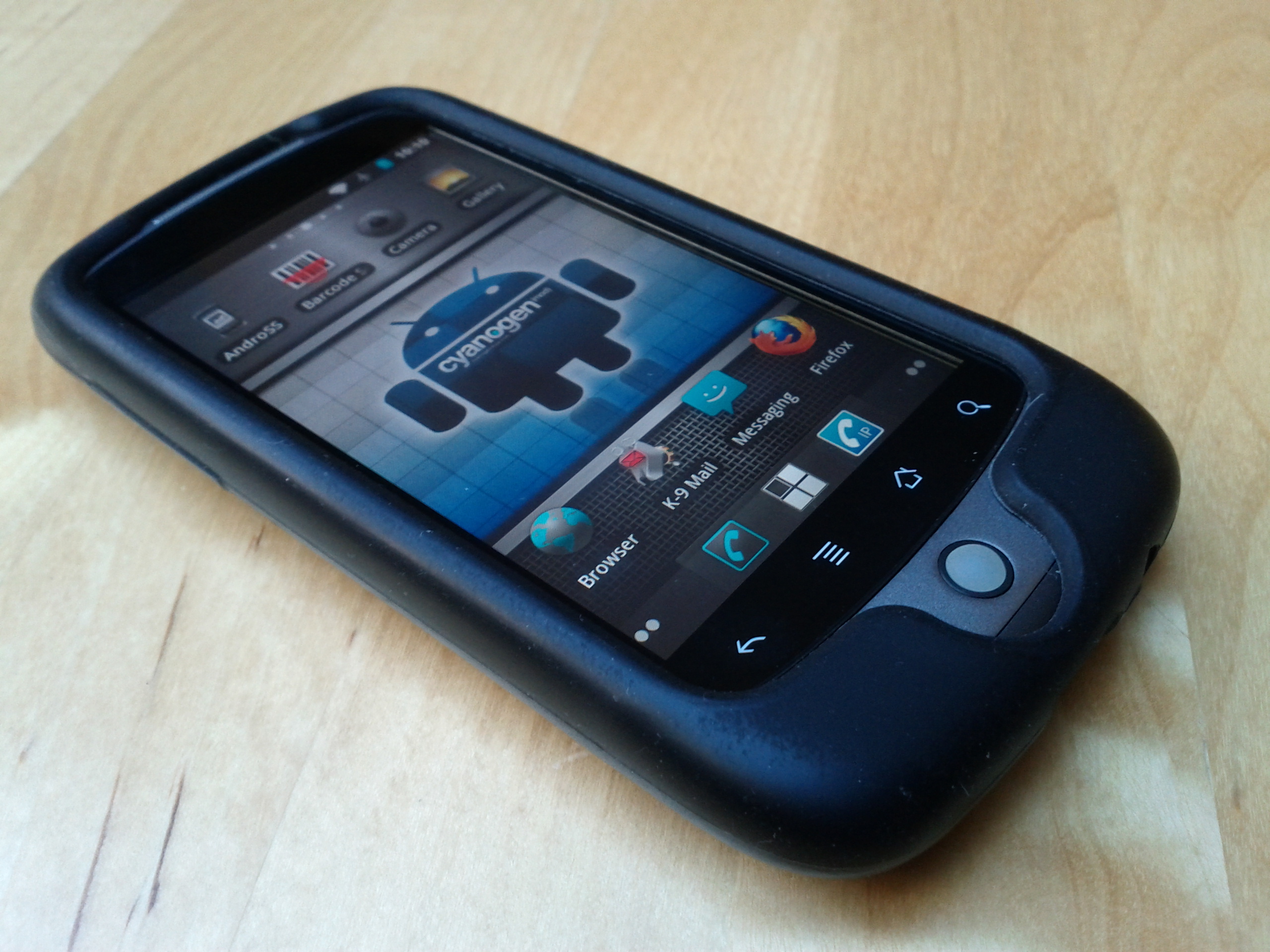
As a first Android device you could certainly do a lot worse than HTC’s G5 Google’s Nexus One. Mine is still in use as my girlfriend’s daily driver.
It all started out as a test, of not only Android but a new Canadian carrier as well. That fellow N97 24/7 alum Jonathan Bruha had already jumped ship to this same device put me at ease somewhat.
Though Android was orders of magnitude easier than Symbian to set up and use there were definitely a few things lacking in terms of utility. For example, in order to grab this screen from my N1 I had to download and install the Android SDK.
Considerably more effort was required to set up my computer to root the damn thing and flash a custom recovery image. Nexus phones are made for this, of course, but it was still a daunting task for a n00b like me. It took me an entire day to get my Nexus recognized by my computer via fastboot.
But man, was it ever worth it. Just like distro-hopping on my Linux computers I could now change ROMs on my phone at will. Mind blown.
In no short order I installed Replicant (needs work), CyanogenMod (amazing) and MIUI, which my girlfriend swears by to this very day. In fact, I had to pry the N1 from her hands just to grab that third screen!
]]>Hi Andrew,
Would you like to join Nokia for a two week trip across the US next month demonstrating some of the capabilities of the Nokia N97?
And thus, in the summer of 2009 this humble blogger of some eight years got his fifteen minutes of fame. I don’t think I was WOM World’s first choice for this gig, but that didn’t matter; I wasn’t the first choice to tour Asia with The Second City either way back when, but I still got to go. How could I pass up an opportunity to visit four cities on someone else’s dime, with a worldwide audience watching our every move?
Two amazing weeks that July were spent in the lovely company of three fellow bloggers — Matthew Bennett, Jon Bruha and George Kelly. Dan Silvers was our chaperone in Los Angeles and San Francisco, then rejoined us in New York City after we had a few days in Chicago on our own. Fond memories of “N97 24/7” are many; a few of my favourites:
- The unabashed geeky joy of some high-level phone talk on the hundred dollar-plus cab ride from LAX to our boutique Hollywood hotel.
- Our meet-up in San Francisco, where I met Dennis Bournique of WAP Review, Myriam Joire from Engadget and Ewan Macleod, a mobile entrepreneur from the UK.
- A failed “challenge” in Chicago, which turned into a rather awesome bender in a bar at the base of the Willis Tower.
- A decidedly over the top wrap-up party in Manhattan, full of “beautiful people” who mostly had no idea who we were, or even what the event was about.
Oh yes, the phone… I viewed the N97 as an iPhone with a secret weapon — the pop-out qwerty keypad underneath. An over-simplification perhaps, but that seemed to me to be the best way to pitch the device to non-Nokians. Unfortunately, it was a pretty hard sell. Where the iPhone was elegant the N97 was clunky, if ultimately more powerful. I had never before tested a mobile device to its limits like I did during those two weeks, and all too often the N97 came up short. Battery power was a constant issue, despite each of us having two devices. The built-in GPS radio took forever to lock on to a signal. Worst of all, we simply spent too much time hunting through menus to get to what we were looking for.
I think its a testament to the character of our blogging quartet that we took the perceived failure of this tour so personally. We had three scheduled meet-ups, one in every city but New York. The turnout was pretty good for the first, fantastic for the second and something on the order of two people for the third. I’ll never forget looking at an entire wall of catered food and then across an almost-empty room at the University of Chicago. In retrospect we probably could have had a lot more fun with the challenges that WOM World handed down to us. But at the time we took our role as Nokia ambassadors very seriously, perhaps too much so.
I didn’t get to keep a souvenir N97 from the tour, but I did end up winning one in a contest the following Christmas. I used it as a test subject for some theme hacks, but never as my full-time phone.
]]>
Here it is, the infamous N97. It wasn’t Nokia’s first touchscreen device, but it was the first to show an obvious iPhone influence — namely the chrome bezel around the perimeter of the device.
The hidden qwerty keypad was an obvious advantage over Apple. As for the touch factor, the N97 was finger-friendly on the home screen widgets but less so elsewhere — explaining the “one foot in the past” stylus that was included in the box.
Nevermind that the N97 was kind of a dud; it provided me with a once in a lifetime opportunity to take one with me across the USA in July of 2009. The video above is an 11-minute compilation of that two-week tour; I just dropped in some appropriate music.
Note that if the video quality looks like crap it’s because the source material is QVGA — not sure why Vimeo won’t let me embed it at its native resolution…
In December of that year I would finally get an N97 to call my own, courtesy of a contest run by Qik. Unfortunately by this time I was using a non-touch Nseries as my daily driver.
I did manage my first-ever S60 phone hack, though — faithfully following the instructions of other, more clever N97 users.
]]>No doubt about it, the iPhone was a revolutionary, game-changing device. Yet to this day I’ve never really been interested in owning one.
There were obvious, practical reasons. I could have imported a first-generation iPhone from the US (at a hefty surcharge), but as I remember it most of the “apps” in those early days weren’t much more than skins for iPhone-optimized web sites. By the time my carrier got the second-gen iPhone 3G I had already begun the move to Linux on my desktop computers. No iTunes meant no iPhone, simple as that.
There were political reasons as well. My short-lived affair with the HTC TyTN and a Windows laptop was no accident; after years of telling users how PowerPC was the superior chip for Macintosh computers, Apple suddenly and inexplicably switched to Intel. I was not impressed. I was similarly disappointed that Apple chose to sell the iPhone through carriers, with locks and subsidies, rather than unlocked in their own retail stores. Blogger Stefan Constantinescu wrote an excellent post in 2008 detailing how Apple had a chance to revolutionize the economics of mobile, and failed. Long story short: I felt burned by Apple and liberated by my unlocked Nokia, a device that I could use on any carrier, anywhere in the world.
Nokia trumped Apple in another, deviously clever way. In the spring of 2008 I received the first in a long series of trial devices from a blogger outreach program called WOM World. I think it started off as Nokia Blogger Relations, and its since been given the new moniker Nokia Connects. Whatever the name, the idea was genius. Anyone with some sort of online presence could request any Nokia product for a two-week trial. A review (good or bad) would send traffic to the writer’s blog and provide free marketing for Nokia. With a steady stream of shiny new toys arriving at my door the idea of being locked to an iPhone for a three-year contract seemed downright comical.
Oh yes, I forgot to mention… The standard carrier contract term in Canada is three years. We’re backwards that way.
Back to the iPhone, I’ve futzed around with almost every version of it, and after only a few minutes its always been the same story — I put it down and walk away. It just doesn’t do anything for me. I absolutely get that it’s made smartphones easier to use, especially for people who have never had one, but for someone like me who struggled through the early years of data synchronization, Internet connectivity and just about every other technological hurdle Apple’s “JesusPhone” has always seemed like a bit of a cheat.
Nokia fanboy? Mobile phone snob? Guilty as charged. I’d finally join the world of modern smartphones a few years later — but for the moment, enduring Symbian’s old school charm was about to pay off. Big time.
]]>HTC was a Taiwanese company that had previously made branded devices for others, most famously the Treo 650 and Compaq iPAQ. The TyTN was not their first Windows Mobile product, but the first to bear the company’s name. And it was fairly spectacular for the times. It was the first phone that I could use in Canada with 3G data service, offering download and upload speeds at least twice as fast as the then-current standards. Added to that was a WiFi radio, letting me hop on to a wireless Internet connection without using cellular data at all. All this plus an extra camera on the front of the phone meant that for the first time I could make voice and video calls using Skype, in flagrant disregard for whatever limitations I had on my calling plan. This was disruptive technology at its very best.
As you can imagine, this premium product had a premium price tag to match. My carrier hadn’t even heard of it, but I found a small local shop that specialized in importing super-high-powered phones from Europe. They could get me a TyTN, but it would set me back eleven hundred bucks. Flush with cash from my first professional contract as a theatre director, I placed my order.
My time with the TyTN was bittersweet. Perhaps its star turn was the nine days it spent with me in Seoul to ring in 2007. I received a “welcome to Korea” text from Fido the moment I powered it up upon arrival at Incheon Airport, and HTC’s flagship fit right in with the super-high-powered phones that the locals were using. My TyTn even got a compliment from the staff at my hotel.
But it was an altogether different story on a trip to Bermuda later that spring. I realized how dim the TyTN’s touch-screen display was when I couldn’t read texts or even see who was calling me in the bright island sunlight. Worse was battery life; with both 3G and WiFi radios turned on I can remember going from a full charge to empty in the space of a twenty-minute cab ride. This TyTN clearly needed much more power than its relatively small battery could provide.
Ultimately the TyTN’s downfall wasn’t the device itself but the desktop operating system it was tied to. I appreciated the push-email capabilities of Microsoft’s Exchange but I despised Outlook on my Windows laptop — so much so that I went back to my hiptop, dumped the Windows laptop for an Apple one and banished my TyTN to the dark recesses of my desk drawer. Then I gave it to a friend. Then he never used it and gave it back to me. Then I gave it to someone else. Then she dropped it in the toilet.
An inglorious end to a titan of smartphones.
]]>

